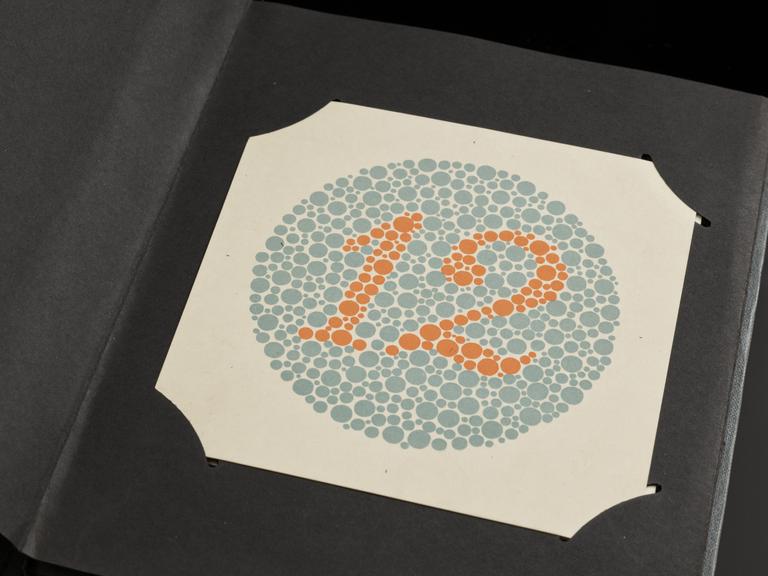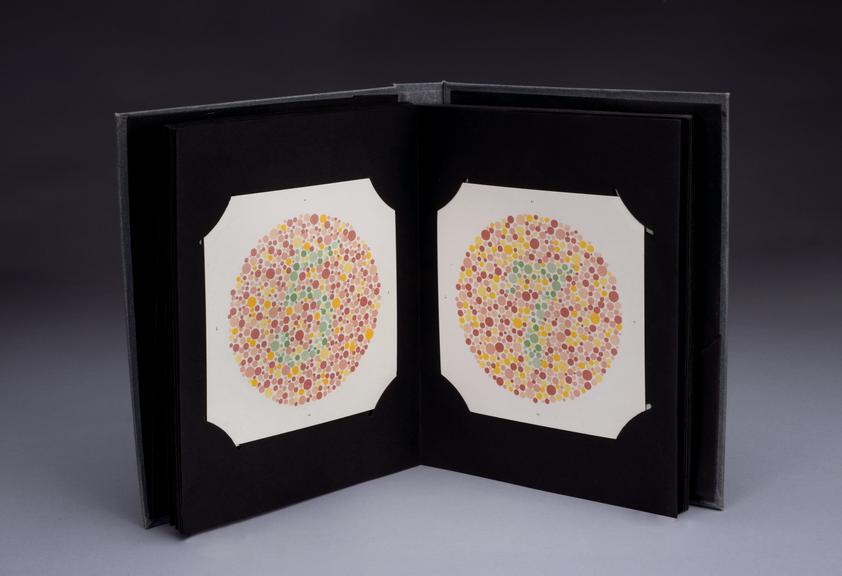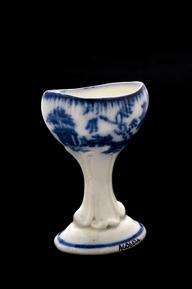











Ishihara colour test with instructions, published by H.K. Lewis and Co. Ltd., English, 1948
Used to test for colour blindness, this test is named after its inventor, Shinobu Ishihara (1897–1963), a Japanese ophthalmologist. Each image is made up of a series of closely packed coloured dots and includes a number. The patient is asked to identify the number or image that they can see. By using the range of charts, the type of colour blindness a patient has can be identified. There are three types of colour blindness: daltonism – inability to distinguish reds from greens (the most common type); monochromatism –where all colours appear as shades of one colour; and total colour-blindness. Ishihara devised his test in 1917 and is still used today.
Details
- Category:
- Ophthalmology
- Collection:
- Sir Henry Wellcome's Museum Collection
- Object Number:
- A662609
- Measurements:
-
overall: 23 mm x 157 mm x 195 mm, .51kg
- type:
- colour blindness test




